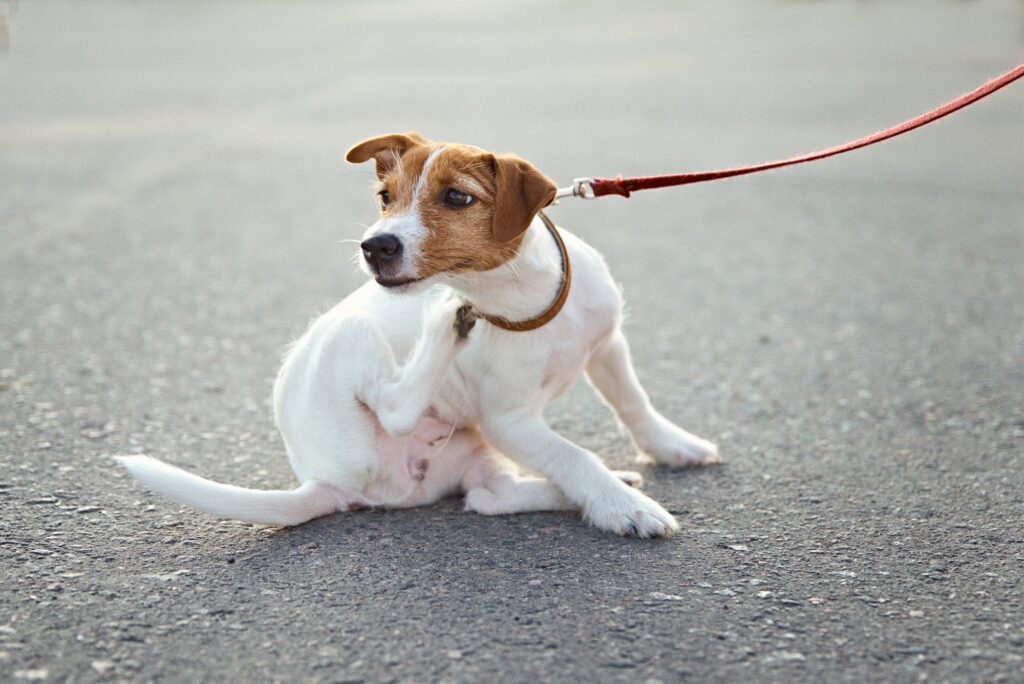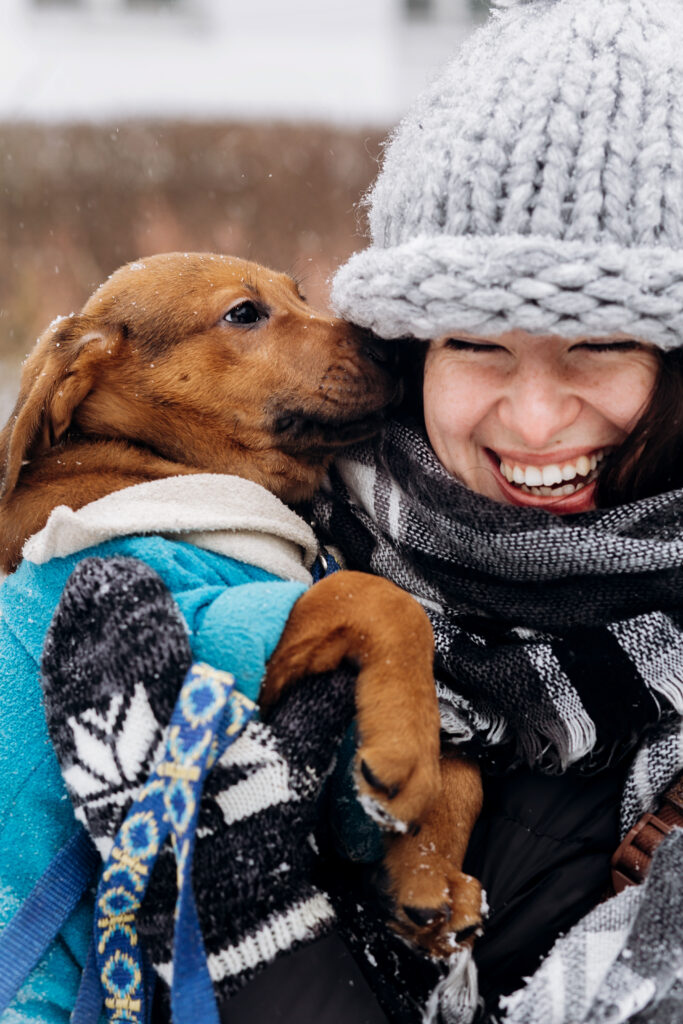Are you planning to take your furry friend for a walk during the winter season? While winter walks can be a beautiful and refreshing experience, they can also be extremely cold As temperatures drop, it’s important to take extra precautions to ensure that your dog stays cozy and protected. in this blog, we will share a variety of valuable tips and tricks to help you navigate winter walks with your canine companion. From proper layering techniques to essential gear recommendations, we’ve got you covered. We understand that your dog’s well-being is a top priority, and we want to provide you with the information you need to keep your dog warm and allow them to experience a safe and enjoyable walk this winter.
Keeping Your Dog Warm on Winter Walks
When taking your dog for a walk in the winter, it’s important to prioritize their warmth and comfort. Here are some of our top tips for keeping your dog warm and safe during winter walks. From proper leash and harness selection to recognizing signs of hypothermia, we’ve got you covered.
Make Sure You Don’t Walk for Too Long
During winter, it is essential to understand the importance of keeping the walks short and sweet. Dogs, especially those with short coats, are more vulnerable to the cold than humans. Prolonged exposure to low temperatures can have detrimental effects on their well-being, including discomfort, frostbite, and even hypothermia. By prioritizing their safety and limiting the duration of the walks, you should have no problem keeping your dog warm and protected. Shorter walks not only minimize the risk of cold-related health issues but also make the winter walking experience enjoyable and risk-free for your beloved companion.
Find the Right Leash and Harness
When it comes to finding the right leash and harness for your dog, it’s important to consider their size, breed, and walking style. A well-fitting leash and harness can provide better control and prevent any accidental slips or escapes during winter walks. Look for options that are durable, adjustable, and weather-resistant to ensure your dog’s safety and comfort.
Remember, keeping your dog on the leash is crucial during winter walks. With slippery and icy conditions, it’s easy for dogs to lose their footing and potentially get injured. So not only is the proper leash important for keeping your dog warm, but also to keep them

Keep Your Dog on the Leash
When it comes to keeping your dog warm during winter walks, finding the right leash is crucial. However, it’s equally important to keep your dog on the leash at all times.
Especially in slippery and icy conditions, having your dog on a leash provides better control and prevents any potential accidents or injuries. It ensures that your dog stays close to you, minimizing the risk of them wandering off into dangerous areas or getting exposed to extreme cold for prolonged periods. By keeping your dog on a leash, you can closely monitor their movements, protect them from hazardous situations, and ultimately ensure their warmth and safety throughout the winter walk.
Get Them Used to Wearing Booties
If you want to take your dog’s winter walks to the next level of comfort and protection while also keeping your dog warm, consider getting them used to wearing booties. Booties are specially designed dog shoes that provide insulation, traction, and protection for their paws. They help to keep their paws warm and shielded from the cold ground, ice, snow, and harmful substances like salt and chemicals used for ice-melting. While it may take some time for your dog to adjust to wearing booties, the benefits are worth it. Not only will booties help keep their paws cozy and prevent frostbite, but they also reduce the risk of injuries caused by sharp objects or rough terrain. So, before heading out on your winter walks, give booties a try and give your furry friend an extra layer of warmth and comfort.
Keep An Eye on The Weather Conditions
Paying attention to the weather and temperature is a crucial part of keeping your dog warm during winter walks. Just like humans, dogs are sensitive to extreme weather conditions. Before heading out, it’s important to check the weather forecast and assess the temperature outside. If it’s too cold or the wind chill is significant, it’s best to limit the duration of the walk or even consider postponing it to a milder day. Additionally, be mindful of sudden weather changes during the walk and adjust your route accordingly. By staying aware of the weather conditions, you can ensure that your dog stays comfortable and protected from the harsh elements.
Don’t Let Your Dog Eat Snow
When taking your dog for a winter walk, it’s important to be mindful of a common behavior: eating snow. While it may seem harmless, allowing your dog to eat snow can actually be risky. Snow can contain harmful substances like salt and chemicals used for ice-melting, which can irritate your dog’s stomach and cause digestive issues. Additionally, consuming large amounts of snow can lower your dog’s body temperature and increase the risk of hypothermia, thus making keeping your dog warm much more difficult. To prevent your dog from eating snow, keep a close eye on them during the walk and redirect their attention to other activities or treats. By ensuring that they only consume clean water and not snow, you can help keep them safe and healthy during your winter outings.
Keep Them Away from Ice and Ice-Melt Chemicals
To ensure both the warmth and safety of your dog during winter walks, it is important to keep them away from ice and ice-melt chemicals. Ice poses a significant risk of injury, as it can be slippery and cause your dog to lose their footing, potentially resulting in fractures or sprains. Additionally, ice-melt chemicals, such as salt, can be harmful if ingested or come into contact with your dog’s paws, causing irritation, dryness, and even chemical burns. By being vigilant and avoiding areas with ice or where ice-melt chemicals have been used, you can effectively protect your dog from potential hazards and maintain their well-being during your winter outings.
Get Them a Jacket
If your dog is willing to let you put a jacket on them, you will have no trouble keeping your dog warm during winter walks. A jacket provides an extra layer of insulation, helping to trap their body heat and protect them from the chilly weather. It acts as a barrier against the cold wind and can prevent their fur from getting wet from snow or rain. With a well-fitted and comfortable jacket, your dog can enjoy the winter walks without feeling the discomfort of the low temperatures. Not only does it help in keeping your dog warm, but it also adds a touch of style to their outdoor adventures. So, if your dog is open to wearing a jacket, it’s a great way to ensure their warmth and make the winter walks more enjoyable for both of you.

Make Sure The Hair Around Their Nails is Trimmed
To ensure the comfort and safety of your dog during winter walks, it’s important to pay attention to the grooming of their paws. One specific area to focus on is the hair around their nails. If this hair is not trimmed regularly, it can collect snow, ice, and other debris during walks, leading to discomfort and potential issues. Excess hair around the nails can also make it difficult to inspect their paws for any injuries or irritations. By regularly trimming the hair around your dog’s nails, you can prevent snow buildup, and keep their paws clean, which is a key part of keeping your dog warm during winter walks
Moisturize Their Paws
Moisturizing their paws is one effective way to work towards keeping your dog warm during winter walks. The cold weather and harsh elements can cause their paws to become dry, cracked, and irritated. By regularly applying a pet-safe paw moisturizer, you can help protect their delicate paw pads from the drying effects of the cold air and prevent discomfort. Moisturizing their paws not only helps to keep them hydrated but also creates a barrier that shields their paws from the cold ground, ice, and salt. It’s important to choose a moisturizer specifically formulated for dogs, as some human products may contain ingredients that are harmful to pets. By incorporating paw moisturizing into your dog’s winter care routine, you can contribute to their overall warmth and well-being during winter walks while also keeping your dog warm.
Wipe Their Paws Off When You Get Back Inside
When you and your dog return from a winter walk, it’s essential to wipe their paws off when you get back inside. This simple step helps to remove any ice, snow, or harmful substances that may have accumulated on their paws during the walk. By doing so, you can prevent your dog from ingesting any chemicals or irritants and keep your floors clean and dry. Remember to use a clean towel or pet-safe wipes to gently clean their paws, and make sure to pay extra attention to the spaces between their toes. Doing this will aid in keeping your dog warm after coming in from the cold!
Know the Signs of Hypothermia
Knowing the signs of hypothermia is crucial when it comes to keeping your dog warm during winter walks. Hypothermia occurs when the body’s temperature drops below normal levels, and it can be life-threatening for both humans and animals. By being aware of the symptoms of hypothermia in dogs, such as shivering, lethargy, pale gums, and difficulty walking, you can take immediate action to warm them up and prevent further complications. Early detection and intervention are key. If you notice any signs of hypothermia in your dog, it’s important to bring them indoors, wrap them in warm blankets, and contact your veterinarian for guidance. Being knowledgeable about the signs of hypothermia empowers you to provide prompt care and work towards keeping your dog warm and ensuring the well-being of your furry friend during winter walks.
Keeping Your Dog Warm During Walks and Throughout the Winter
Prioritizing the safety and comfort of your furry friend is essential when it comes to keeping your dog warm during winter walks. By implementing the tips and techniques outlined in this blog, you can ensure that your canine companion stays cozy and protected in the chilly weather. From choosing the right leash and harness to using booties and a jacket, trimming their nails, moisturizing their paws, and being aware of the signs of hypothermia, these strategies will contribute to their warmth and well-being. Remember to adapt the duration of the walks according to the weather conditions and to wipe their paws clean afterward. By following these guidelines, you and your dog can enjoy safe and enjoyable winter walks together, keeping your dog warm every step of the way.
